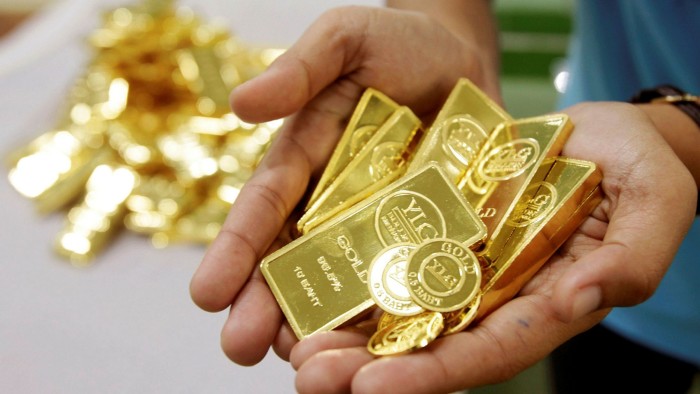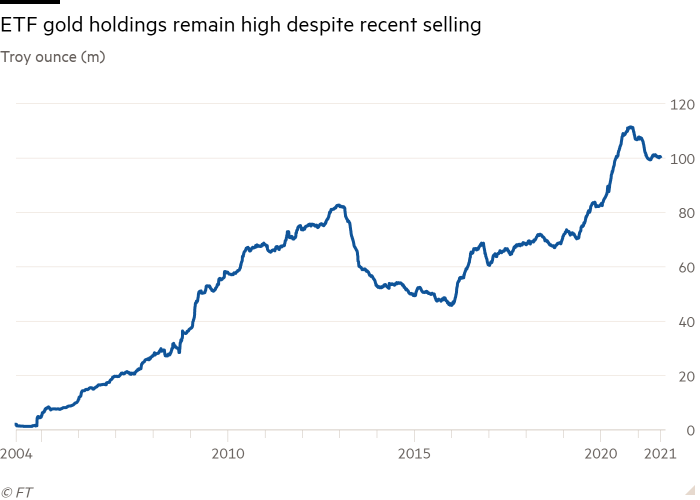European investors pour nearly $1bn into gold ETFs in July

Simply sign up to the Exchange traded funds myFT Digest -- delivered directly to your inbox.
Interested in ETFs?
Visit our ETF Hub for investor news and education, market updates and analysis and easy-to-use tools to help you select the right ETFs.
European investors poured nearly $1bn into exchange traded funds that invest directly in gold in July, more than offsetting outflows from US funds and indicating the emergence of divergent views on inflation, the global economy and future direction of the precious metal.
European funds attracted net inflows of $999m, equivalent to 17.1 tonnes of gold, while ETFs domiciled in North America, led by large US funds, saw net outflows of $402m or 7.3 tonnes, according to the World Gold Council, an industry body. Overall, WGC data showed a 0.3 per cent rise in assets under management in gold ETFs in July, driven mostly by the buying in Europe, although Asia also recorded net inflows.
“Gold is currently in transition,” said Mobeen Tahir, associate director of research at WisdomTree in Europe, which manages a range of gold exchange traded products.
He said gold was primarily used as a safe haven last year to hedge against the risks from the global downturn and the pandemic. That prompted a surge in interest in the metal driving its price to a record $2,067 an ounce in August 2020. “With the economic recovery under way and risk sentiment improving, this safe-haven demand has reduced,” he said.

Only Asia showed positive inflows into physical gold ETFs, which invest directly in the metal, in the first half of this year. Global gold ETF assets under management remain $6bn down on the beginning of the year.
This waning of interest in the precious metal had “caused a great deal of head scratching among participants”, said Saxo Bank analyst Ole Hansen.
He pointed to the “historical strong inverse correlation between real yields and gold”. In other words, when real yields — a measure of the returns bond investors can expect once inflation is taken into account — move higher gold moves lower and vice versa. Real yields hit a record low on growth concerns at the end of July.
Tahir said views between European and US investors were diverging partly because of different opinions over whether gold was a good hedge against inflation.
“Potentially, in the US the recognition that gold could be a good inflation hedge hasn’t quite taken hold,” Tahir said. He added that gold typically performed particularly well when there were sharp spikes in inflation, but when inflation was more moderate broad baskets of commodities were often a better bet.
Tahir said the US Federal Reserve was “continuing to endorse the idea that inflation will be transitory”, adding that if inflation persisted at a high level that idea might change.

Click here to visit the ETF Hub

Comments